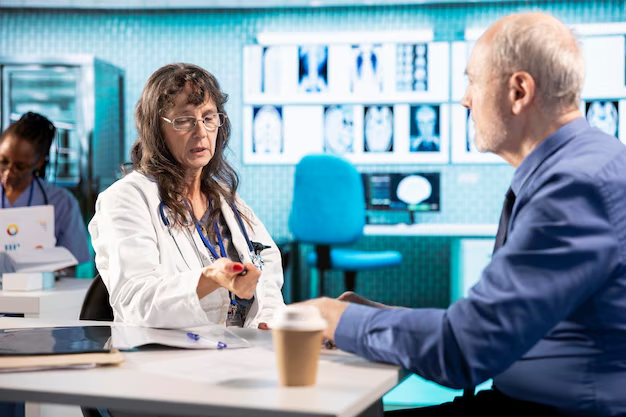Understanding Leukemia: Are We Close to a Cure?
While the word “cancer” can unsettle even the bravest among us, its complexities and the scientific advances related to it are as fascinating as they are daunting. One question that frequently arises in this realm is: Is there a cure for leukemia? This blood cancer has prompted extensive research and inspired hope for countless individuals and families. In exploring this topic, we'll venture through the current landscape of leukemia treatments, highlight recent breakthroughs, and outline avenues of ongoing research. Let’s uncover the layers contributing to the understanding and management of leukemia.
What is Leukemia?
Leukemia is a type of cancer that starts in the bone marrow—the soft tissue inside bones where blood cells are produced. This cancer primarily affects white blood cells, which are crucial for fighting infections. However, leukemia can also impact red blood cells and platelets.
Types of Leukemia
Understanding the four main types of leukemia is essential for contextual clarity:
- Acute Lymphoblastic Leukemia (ALL): Predominantly affects children but can occur in adults.
- Acute Myeloid Leukemia (AML): Can affect both adults and children; generally more common in adults.
- Chronic Lymphocytic Leukemia (CLL): Typically occurs in adults over 55.
- Chronic Myeloid Leukemia (CML): Primarily affects adults.
Each type varies in progression speed and treatment response, influencing the overall approach to managing and potentially curing the disease.
Current Treatment Approaches
Chemotherapy
Chemotherapy remains a cornerstone treatment, using drugs to kill or slow cancer cell growth. The primary aim is to achieve remission, which means the symptoms and signs of cancer are reduced or disappear. However, chemotherapy alone doesn't always result in a cure.
Targeted Therapy
This approach exploits specific cancer cell anomalies. It involves medications designed to attack cancer cells without harming normal cells. For example, imatinib is a targeted therapy widely used for CML, which has dramatically improved survival rates.
Immunotherapy
Harnessing the body’s immune system, immunotherapies are among the more innovative treatment methods. They can include CAR-T cell therapy, which modifies a patient’s T cells to attack leukemia cells more effectively.
Stem Cell Transplant
Also known as a bone marrow transplant, this procedure replaces diseased bone marrow with healthy cells. It's often used when other treatments have failed to provide long-term remission, potentially leading to a cure for some patients.
Research and Breakthroughs
The Role of Genetics
Understanding the genetic background of leukemia has been a game changer. By sequencing genes, researchers can identify mutations that may drive the cancer, which informs targeted treatment strategies.
Emerging Therapies
- Gene Therapy: Experimental but promising, this approach alters genes within leukemia cells to disrupt their growth.
- Monoclonal Antibodies: These lab-produced molecules can be designed to bind to leukemia cells, triggering an immune response.
- Cancer Vaccines: While still in trial phases, vaccines designed to prevent cancer recurrence are an exciting area of development.
Personalized Medicine
Personalized or precision medicine tailors treatment to the individual patient based on their unique genetic makeup. This customized approach aims to increase treatment efficacy while minimizing side effects.
Challenges in Finding a Cure
Despite many advances, curing leukemia presents challenges:
- Complex Biology: Cancer cells evolve over time, contributing to drug resistance.
- Diversity Among Patients: Variability in genetic mutations among patients complicates treatment standardization.
- Relapse: Even after remission, leukemia can return, necessitating ongoing research for lasting solutions.
Psychological and Support Aspects
Dealing with a leukemia diagnosis is as much a psychological journey as a medical one. Support systems, whether family, friends, or support groups, are vital in navigating treatment and recovery.
- Counseling: Provides emotional support and coping strategies.
- Support Groups: Offer shared experiences and communal support.
- Educational Resources: Empower patients and families to understand the disease and treatment options.
Alternative and Complementary Therapies
Complementary therapies such as acupuncture, meditation, and yoga can provide relief from treatment-related side effects, improve quality of life, and support emotional well-being. However, they should never replace conventional treatments unless guided by a healthcare provider.
Looking Forward: Is a Cure on the Horizon?
While a universal cure for leukemia remains elusive, the amalgamation of scientific endeavors and clinical trials continues to propel us closer. The strides in targeted therapies, genetic research, and personalized medicine hold promise not only for managing the disease but potentially leading to curative solutions.
The narrative of leukemia is one of resilience, hope, and relentless pursuit. Each treatment milestone brings us a step closer to redefining what a “cure” might look like, instilling optimism for a future where leukemia is no longer a life-threatening condition but a manageable one.
Summary Table: Key Takeaways from Our Leukemia Exploration
| Topic | Key Insights | Visuals |
|---|---|---|
| Types of Leukemia | Four main types: ALL, AML, CLL, CML | 🧬 |
| Treatment Options | Chemotherapy, targeted therapy, immunotherapy, stem cell transplant | 💉 |
| Research Advancements | Focus on genetics, gene therapy, monoclonal antibodies | 🔬 |
| Challenges | Genetic variability, drug resistance, relapse | 🧩 |
| Support Systems | Counseling, support groups, educational resources | 🤝 |
| Complementary Therapies | Acupuncture, yoga, meditation | 🧘 |
| Future Prospects | Innovations lead toward hope for more effective cures | 🌟 |
In the fight against leukemia, informed vigilance is pivotal. By staying abreast of continuous advancements and utilizing available support, patients are empowered to make knowledgeable decisions about their care. With ongoing research, the horizon glimmers with promise, underscoring a journey grounded in hope and perseverance.

Related Articles
- Can Leukemia Be Cured
- How Do Cats Get Feline Leukemia
- How Do They Test For Leukemia
- How Do You Get Leukemia
- How Do You Test For Leukemia
- How High Are Monocytes In Leukemia
- How Is Feline Leukemia Spread
- How Is Feline Leukemia Transmitted
- How Is Leukemia Diagnosed
- How Long Can You Live With Chronic Lymphocytic Leukemia